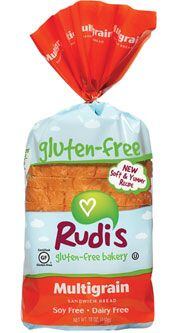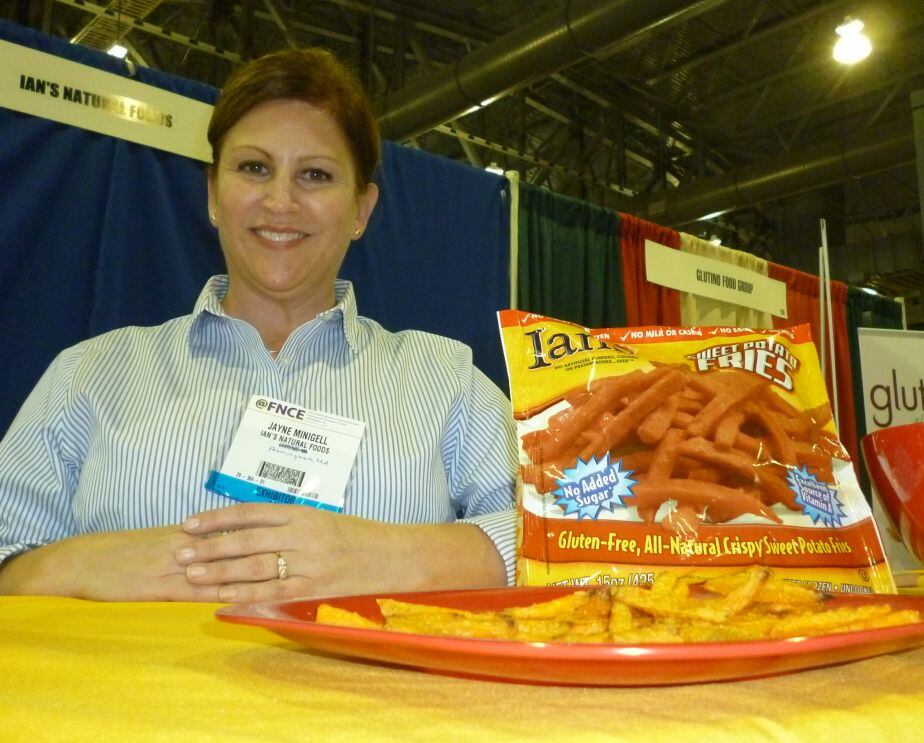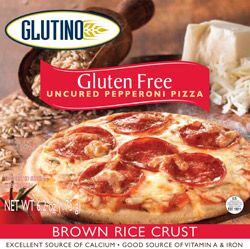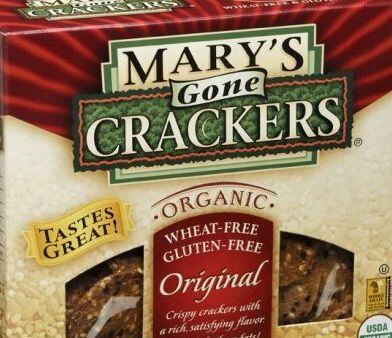The inner circle – representing diagnosed celiacs with the confirmed auto-immune disease – accounts for less than 0.1% of the population, which is pretty small fry.
The second circle – representing the actual number of celiacs likely to be in the US population, most of which are undiagnosed – accounts for around 1% of the population - a sizeable number, but still nothing for the sales people to start salivating over.
The third circle – representing people with a wheat/gluten intolerance (perceived or otherwise) – accounts for around 6-7% of the population, a far bigger number, but still a relatively niche market.
However, the final circle – representing people that actually buy gluten-free, for whatever reason, represents almost a fifth (18%) of the population, according to Packaged Facts. And these kinds of numbers do warrant some serious commercial attention.
The market is growing even faster than anticipated

According to data from SPINS, sales of gluten-free products were up 19% in the year to September 2012 in natural and conventional channels combined (excluding Walmart, Trader Joe’s, Whole Foods Market), while Packaged Facts says compound annual growth rate for gluten free products in the US retail market 2008-2012 is approaching 28%.
Mintel data meanwhile, shows that the number of new product launches featuring gluten-free claims rose from 600 in 2007 to more than 1,600 in 2011, while Packaged Facts says the market is growing "even faster than anticipated", and is set to reach $6.5bn in 2017.
So what is driving the growth?
Asked why they buy gluten-free products in an August 2012 Packaged Facts consumer survey, 35% said gluten-free products are "generally healthier", 27% said "to manage my weight", 21% said that gluten free products are "generally low-carb" and 15% said a member of the household has a gluten or wheat intolerance.
Just 7% said they were buying them because a household member has celiac disease.
The conviction that gluten-free is healthier is the top motivation for purchase
Indeed, according to Packaged Facts, "The conviction that gluten-free products are generally healthier is the top motivation for purchase of these products.”
And while there is absolutely no evidence that following a gluten-free diet is going to make a non-celiac healthier or lighter - in fact the opposite may be true (gluten free diets are often higher in calories and fat and lower in vitamin B12, zinc, iron and folate) - this apparent misconception appears to be what is driving a large chunk of purchases.
Why do consumers think gluten-free is healthier?
In some respects, this should not come as a great surprise, given that many gluten-free products also happen to be all-natural, organic, and free from GMOs, artificial preservatives and other things many consumers are trying to avoid, says Packaged Facts.
Meanwhile, many gluten-free products are also sold in the natural food channel, or natural foods sections of mainstream retailers, which consumers typically associate with healthier products.
We used to think there was a ceiling in terms of market potential, not any more

The fact that many manufacturers in this space are appealing to non-celiac as well as celiac consumers who see gluten-free as just part of a broader set of claims associated with ‘natural’ or healthier foods is evident from the positioning - and repositioning - of many brands in the marketplace.
A quick glance at the website at Ian’s Natural Foods, the market leader in frozen gluten-free, makes this clear, with the gluten-free positioning sitting amongst a bunch of other claims including: “No Artificial Flavors, Colors, or Preservatives... EVER! No Hydrogenated Oil. No Trans Fats. No Refined Sugars. No Antibiotics. No Hormones. No Bleached Flours. No Tripolyphosphates.”
Jayne Minigell (pictured above left), director of marketing at Elevation Brands, which owns Ian’s, says the brand is generating “significant double digit growth year-on-year”, and is now worth more than $30m with strong sales in conventional and natural retail channels and a growing presence in foodservice and club stores.
But this isn’t just about gluten-free, she says. “All-natural taps into lots of trends, so if you focus on this, you pick up a wider audience.”
The products - from chicken nuggets, sweet potato fries, breakfast sandwiches, fish sticks and pizza to cookies, will typically be stocked in the general frozen section or the natural foods section, as well as a gluten-free section if there is one, she says. “We want to appeal to the widest possible audience.”
And by the way, it’s gluten-free…

At Glutino’s, meanwhile, although the gluten-free message is still the most prominent on-pack, the firm is also focusing on non-GMO, with several products now certified under the Non-GMO Project verified scheme, says a spokeswoman, while several of its bars are also certified organic.
At Udi’s, the #1 gluten free bread and baked goods company in the US, the aim is to make celiacs feel like they are eating normal food, and to make everyone else feel like eating gluten-free foods is normal, says grassroots marketing manager Regan Han.
The growth the brand has seen over the past three years has been “pretty amazing”, she adds. “Our biggest sellers are white and wholegrain sandwich bread, then muffins and buns. We used to think there was a ceiling in terms of the market, but we’re not so sure anymore.”
The product range, which has recently been expanded to include pizzas, blueberry oat muffin tops and brownie bites, also includes products containing some more interesting and nutrient-dense gluten-free ingredients including millet seed (Everything Inside bagels), whole quinoa flour (Harvest Crunch muffins) and ancient grain of the moment chia seed (Chocolate muffin tops).
The gluten-free market 2012: Double digit growth
According to Packaged Facts, snack/granola bars account for a leading share of about 15% of 2012 sales in the food/drug/mass channel, while frozen dinners/entrees/pizza, crackers/salty snacks, and shelf-stable dinners/soup each accounts for around 11-12% of estimated sales.
“All of the major categories Packaged Facts examined showed double-digit percentage sales gains between 2010 and 2012, with frozen bread/dough and fresh bread/rolls increasing by more than 60%.”
As to where consumers are purchasing gluten-free products, the market has shifted “dramatically” since 2008, says Packaged Facts, with mainstream retailers now accounting for an estimated 79% of sales, whereas 10 years ago, the natural channel dominated.
Prolific new product development in crackers and salty snacks

As for innovation, Packaged Facts estimates that North America’s share of global gluten-free new product introductions has grown significantly in the past five years, and now stands at over 60%, ahead of Europe, which accounted for about one quarter of introductions.
The most prolific growth in the US has been in crackers and salty snacks, which accounted for more product introductions than any other category analyzed, says the researcher.
“Snack bars/fruit snacks and beverages round out the top three. In terms of both the number of announcements and the number of individual products, these three categories combined make up about a 45% share of all product introductions between March 2011 and June 2012.”
